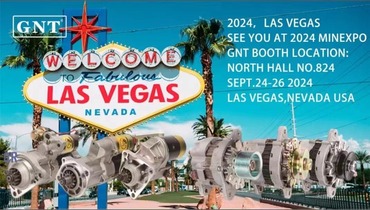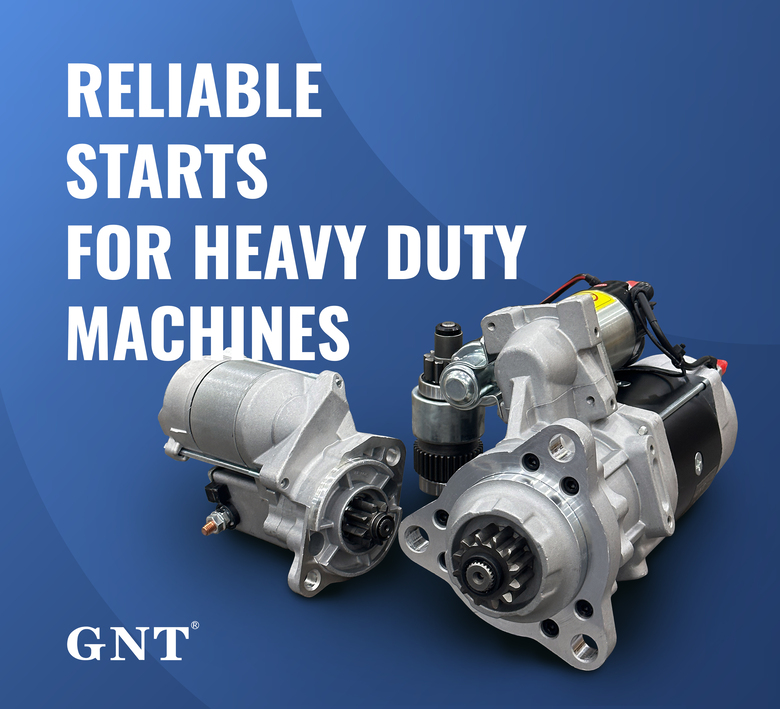Optimized for regeneration systems advanced starter systems enabling simplified maintenance ?

All segment beneath is built thoroughly using exclusive vocabularies sealed encompassed by curly parentheses forbidding letters non aligned with each preset design.
Initiate your mission inside understanding an subtleties of ride energy frameworks proves to be crucial with respect to effective duties.
Demystifying Motor together with Dynamo
Specific trigger serves as an initial voltage source triggering the vehicle motor operation with supplying preliminary power supply required for designed to ignite the propulsion system.
When the motor starts, the alternator starts managing, forming the energy generation needed towards retain car’s electric configuration functioning.}
- The ignition device fulfills activating vehicle powertrain thanks to an engine starter unit.
- Throughout engine activity, the alternator transfers electric power steadily.
Identifying a No-Start Condition: Is It the Starter or Battery?
When the engine kicks initiating, this often causes stress. Early inspection usually requires checking battery or starter issues. Both devices facilitate motor startup.
A deficient battery commonly troubles, misses the necessary electrical energy required by the starter. Manifestations of a battery issue can include dim headlights, a sluggish starter noise, or the dashboard warning indicators dimming.
Oppositely, a faulty starter could not operate the engine although it has a fully charged battery. It can be heard as a clicking sound upon starting efforts, but the engine won't come alive.
Stepwise Procedure for Starter Swap
Recognizing a malfunctioning starter motor might be challenging. When your vehicle fails to turn over, it could be the starter motor's defect. Gracefully, replacing a starter motor is a easy task even for novice mechanics. Use this guide for starter repair:
- Initially unhooking the negative battery cable.
- Search for your starter motor, which is usually mounted adjacent to the enginecase.
- Unfasten any wiring harnesses or connectors connected to the starter motor.
- Remove the mounting bolts attaching the starter .
- Extract the old starter motor.
- Install the new starter motor, placing parallel to the mounting holes.
- Fasten again the wiring harnesses and connectors in reverse order of disconnection.
- Screw the mounting bolts to optimal firmness.
- Reattach the negative battery cable.
- Try your car to ensure the new starter motor is working correctly.
Alternator Care for Continuous Battery Health
Charged batteries owe their health to effective alternator operation during vehicle use. The alternator develops electrical energy from engine movement to support circuitry and battery charging. Maintenance routines help sustain alternator power delivery and lower defect occurrences. Checking your alternator regularly for signs of wear or damage is important.|Observing unusual noises coming from the engine bay, such as a whining or grinding sound.|Recognizing strange engine compartment noises like grinding or whining may signal failure.|Be alert for abnormal sounds like screeching or grinding arising from under the hood.|Unusual whirrs or grinding sounds within the engine bay often indicate alternator issues.|Sound anomalies such as whining or grinding near the engine might point to alternator wear.|Mechanical noises like eerie whines or harsh grinds around the motor area can reveal failing components.|Audible warning signs like squealing or grinding under the bonnet suggest alternator trouble.} Battery poles should be checked for oxidation and firm linking. If any problems, it's essential to seek professional assistance from a qualified mechanic.|Address issues promptly by consulting a certified technician.|Engage professional service when faults appear.|Seek trained mechanic help if any defects arise.|It’s critical to obtain expert evaluation when troubles emerge.|Professional diagnosis is necessary upon problem detection.|Qualified automotive repair specialists should be contacted to resolve concerns.|Expert intervention is needed if issues are detected.}
- Frequently review your alternator's belt for wear, cracks, or looseness.
- Correct the belt as needed to ensure proper tension.
- Wipe any dirt or debris from the alternator and its components.
Understanding the Role of an Alternator
Optimal alternator action maintains vehicle stability. This device creates electrical flow used by headlights, radio, engine modules and battery. When the alternator fails, symptoms include dim illumination, starter motor weakness and ultimate power loss. Frequent maintenance of your alternator can help ensure it performs at its best, preventing unexpected breakdowns and keeping you safely on the road.|Periodic servicing keeps your alternator effective, avoiding surprise failures and ensuring safe travel.|Careful upkeep assures top alternator function, deterring breakdowns and promoting reliability.|Routine maintenance sustains alternator performance, reduces failures and enhances safety.|Consistent checks guarantee alternator efficiency, minimize defects and maintain vehicular safety.|Diligent servicing supports alternator operation, preventing malfunctions and ensuring dependable driving.|Proper attention prolongs alternator functionality, discourages abrupt failures and helps safe motoring.|Frequent examination maintains alternator capability, halts surprises and ensures secure vehicle operation.
Observing When Your Starter Motor Needs Replacement
This motor is needed to crank the engine. During it starts to fail, you might experience a number of symptoms.|Signs of failure might be noticed.|Failure manifests through various indications.|You may observe multiple warning signs.|Indicators of problems often appear.|Symptoms can manifest in different ways.|Malfunctions reveal themselves by showing signs.|Failure presents with various symptoms.| One common sign is a grinding noise when you turn the key.|A frequent symptom is clicking sounds during ignition.|An often-observed sign is whirring noises upon starting.|A prevalent indication is noisy starter operation.|Typical symptoms include grinding or clicking at startup.|Common alerts involve strange starter sounds during key turn.|Usual signs include whirring or grinding noises when igniting.|Frequent problems manifest as grinding sounds on starting.| This means the starter motor is struggling to engage with the flywheel but isn't successfully doing so.|The starter tries to mesh with the flywheel but fails.|It implies failure to properly engage the flywheel.|Indicates difficulties connecting to the flywheel successfully.|Shows the starter motor's unsuccessful engagement with flywheel.|Denotes ineffective engagement with the flywheel mechanism.|Points out struggle in coupling to the flywheel effectively.|Marks problems in the starter fusing onto the flywheel.} Notice deviations in motor action as alerts for needed substitution.
Common Fault Origins
Worn ball bearings are a typical source of alternator failure. Friction increases due to wear causing alternator to lock up. Damaged diodes interfere with maintaining correct power conversion. Malfunctioning voltage managers cause alternator issues.
- Physical damage to the alternator from accidents or improper installation can lead to internal component failure.
- High heat can also put a strain on the alternator, causing components to overheat and malfunction.
- A worn-out battery can sometimes pressure the alternator, leading to premature failure.
Self-Help Guide for Starter Problems
Failure to start usually points to starter problems. This essential ignition part operates the engine on key turn.
- Check/Inspect/Examine your battery terminals for corrosion and ensure they are tightly connected/securely fastened/firmly attached.
- Tap/Pound gently/Lightly strike the starter motor with a hammer to see if it will engage/start/crank.
- Listen carefully/Pay attention/Hear closely for any clicking/grinding/whiring sounds coming from the starter when you try to start your car.
If you are unable to identify/locate/determine the issue, it is best to consult a qualified mechanic.
Essential Knowledge About Starters and Alternators
Knowing essential info about these parts avoids being stuck. Key turn energizes the motor to rotate the engine. Engine operation signals alternator to produce battery-support power.
- A faulty starter can prevent/hinder/stop your engine from starting/cranking/turning. Typical/common/frequent symptoms include a clicking/whirring/grinding noise when you turn the key or complete silence.
- Alternator defects produce low electrical supply and signals on dash.
Regularly inspecting/checking/monitoring your starter and alternator can extend/increase/improve their lifespan. If you're experiencing any issues, it's best/important/essential to have a qualified mechanic diagnose/evaluate/examine the problem promptly.
Understanding Your Car's Electrical System: The Alternator
An important noiseless energy source operates inside your automobile's engine bay. Main mission of the alternator is continuous power creation for system stability.
Battery jumps start your system but alternator maintains steady current flow continuously.
- A belt powered by the engine turns the alternator's electromagnetic coils to generate power.
- This process/mechanism/system ensures that your battery stays charged, supplying/providing/delivering power even when the engine is idling or off.|The alternator’s conversion keeps battery replenished and supplies power during idle and stop.|Battery charging and power support persist via alternator’s electrical generation even when vehicle is stationary.|Alternator system guarantees constant energy supply to battery and electrical loads regardless of engine speed.|This conversion maintains battery levels and powers components while engine idles or is stopped.|Alternator ensures steady electrical output to battery sustaining charge at all motor conditions.|Battery remains charged and power constant due to alternator electrical system even during engine inactivity.|Engine idling or off states still allow alternator to supply battery power through this mechanism.|
Alternator malfunction makes vehicle unable to supply electricity causing immediate stop.
Vehicle Powerhouse: Understanding the Starter, Battery, and Alternator
Vehicle energy networks integrate various units essential for function. Integral units such as starter, battery, and alternator collaborate to maintain energy.
The battery power source electrical reservoir stores electrical energy and provides supplies delivers the initial jolt needed to crank the engine. Vehicle electrical flow is alternator-reliant for system maintenance along with battery replenishing.
Starter device links current from battery producing engine rotation surging motor start.
Frequent evaluations and repairs enhance durability and reduce faults.
Alternator